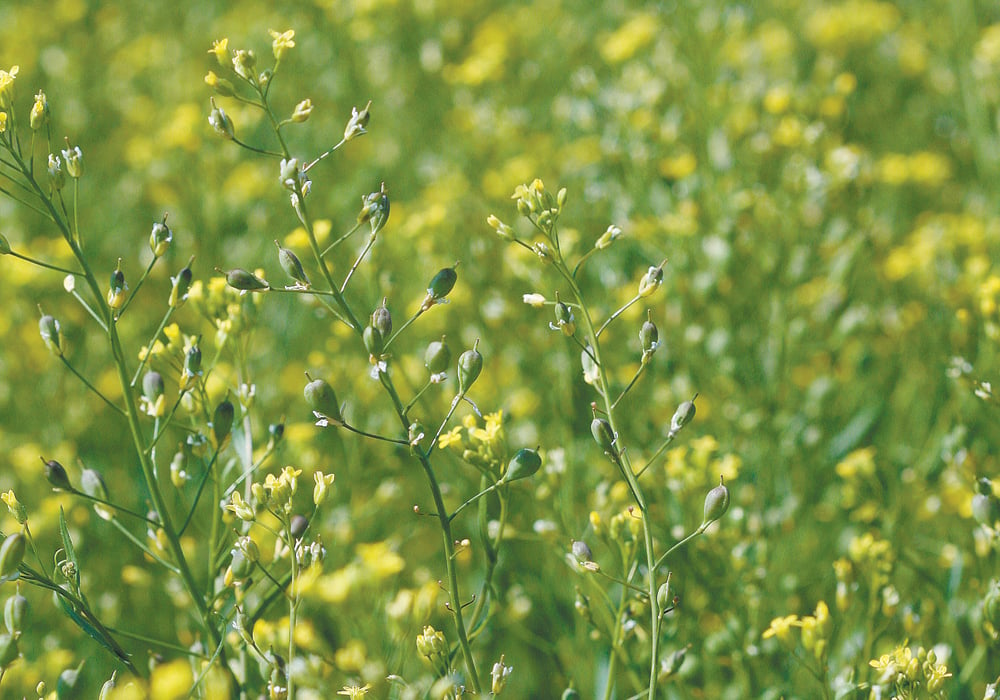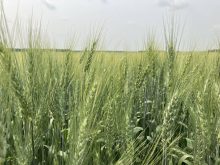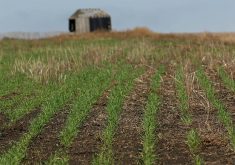An Agriculture Canada researcher has found a variety from the United States that can tolerate cold winters
Winter wheat acres are in a free fall.
In 2015, prairie growers seeded about 680,000 acres of winter wheat. Since then, acres have consistently dropped, hitting 335,000 acres in 2018, based on Statistics Canada data.
Much of the decline can be blamed on poor conditions in late summer and early autumn. Soils were perhaps too dry for seeding. Or maybe it was too wet to harvest canola or another spring crop, making it impossible to seed winter wheat in September.
If growers had another winter crop to rotate with winter wheat, it could alleviate the second problem — where growers can’t seed winter wheat on time.
Read Also

Critical growing season is ahead for soybeans
What the weather turns out to be in the United States is going to have a significant impact on Canadian producers’ prices
That crop? Winter camelina.
“It might facilitate an actual winter crop rotation. It would work extremely well in rotation with winter cereals,” said Christina Eynck, a camelina and carinata breeder with Agriculture Canada in Saskatoon.
Like canola, camelina is a brassica crop that produces a small seed, which can be crushed to produce a high quality oil. Camelina acres are small in Western Canada. Growers, mostly in Saskatchewan, have seeded about 5,000 to 8,000 acres of camelina in recent years.
Almost all of those acres are spring camelina, but Eynck believes winter camelina is a good fit for the Prairies.
“It matures even earlier than spring camelina,” she said.
“You could harvest it as early as the beginning of July.”
Researchers at the University of Minnesota have found that winter camelina can produce about 20 to 34 bushels per acre. That’s small compared to spring canola. Still, seeding camelina in the fall offers other benefits. It keeps the ground covered, reducing wind and water erosion.
And it minimizes nitrogen losses from the previous crop.
“Winter camelina can adsorb and store up to 70 lb. per acre of nitrogen fertilizer left behind by the previous cereal crop, such as corn. This is nitrogen that otherwise might be leached from the soil into groundwater, washed into nearby wetlands, or volatilized into the atmosphere,” states a University of Minnesota website.
There are also benefits for bees because winter camelina flowers early in the spring and is an excellent source of nectar.
There may be an opportunity for winter camelina, but growers probably need a variety suitable for Western Canada.
That’s where Eynck comes in.
She found a winter camelina variety from the U.S. Department of Agriculture and hopes to improve it by cross breeding with winter camelina types from Eastern Europe and elsewhere.
Fortunately, the USDA variety can tolerate cold winters, Eynck said.
“It is comparable to fall rye. It has quite impressive winter survivability.”
Eynck isn’t the only innovator who believes winter camelina has a future in Western Canada.
Ken Greer, founder of the Western Ag Group of Companies, is also promoting winter camelina.
“It’s got some great potential,” said Greer, who spoke about winter crops at the Farm Forum Event, held early December in Saskatoon.
During his presentation, an agronomist asked about the potential of winter canola in Western Canada. Greer said winter canola is not a realistic option because breeders and companies are focused on spring canola.
“There’s way too much money in spring canola seed to ever worry about winter canola,” he said. “If you’re looking for something (a winter oilseed), we went to camelina. It crushes the same (as canola). There’s a market for it.”
Camelina can be crushed to produce an excellent oil and there is demand, from consumers, the equine market and the farmed fish industry.
However, it will take a few years before a new variety of winter camelina, bred for prairie conditions, is on the market.
“We are just now conducting crosses,” Eynck said.
“We would expect varieties, possibly, in four to five years.”


















